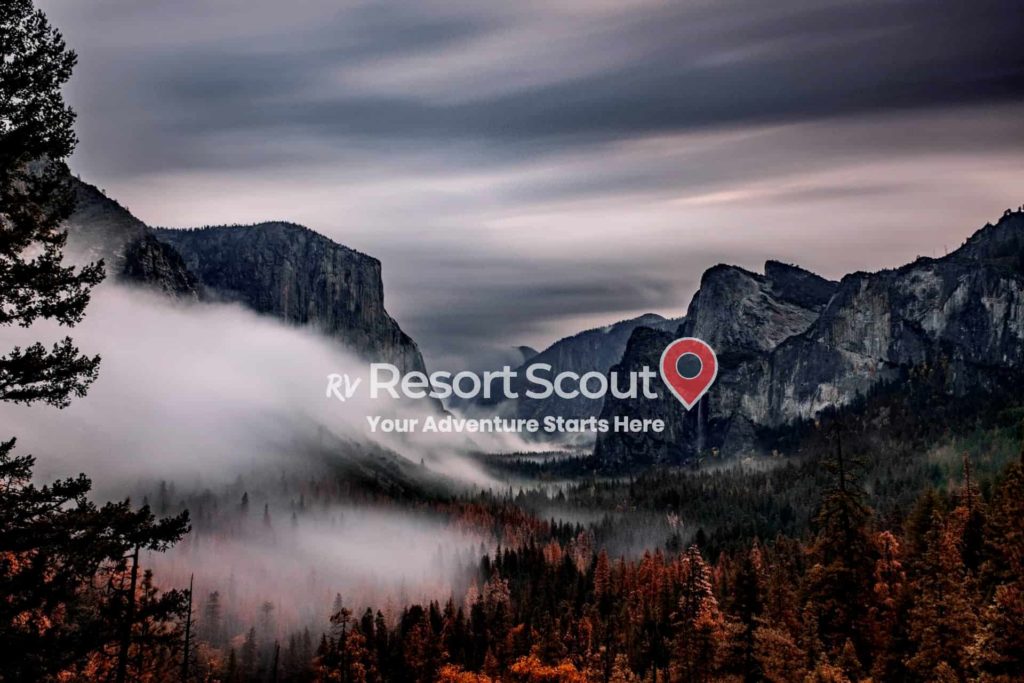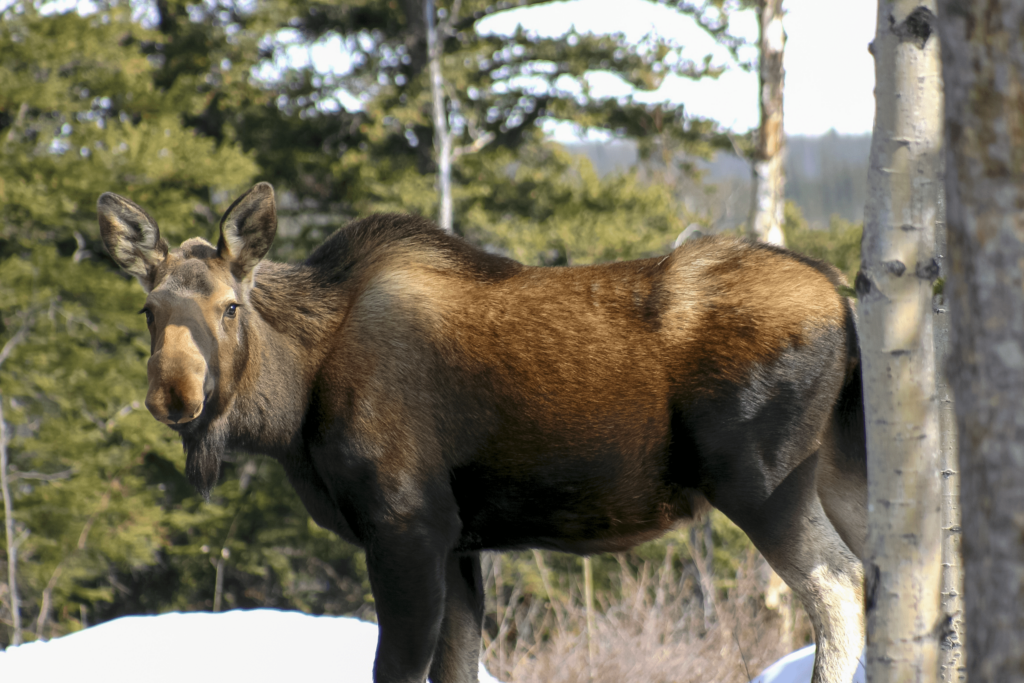The Ultimate Guide: Wrangell-St. Elias National Park

Wrangell-St. Elias National Park, located in the untamed wilderness of Alaska, encompasses a vast expanse of rugged terrain and breathtaking landscapes. Spanning over 13 million acres, it holds the distinction of being not only the largest national park in the United States but also larger than the entire state of Vermont, offering endless opportunities for outdoor enthusiasts to immerse themselves in its pristine beauty while observing the diverse wildlife, including bears, moose, and mountain goats.
For a condensed view of the park feel free to check out rvResortScouts Wrangell-St. Elias National Park Information listing.
Park History / General Overview
Wrangell–St. Elias National Park has a rich history. The park is home to the Wrangell Mountains, which are some of the oldest mountains in North America. The Wrangell Mountains have been home to people for thousands of years. The Ahtna people have lived in the park for a long time. They have hunted and fished in the park for food. They also have used the park’s resources to make tools and clothing.
The park also has a history of mining. In the early 1900s, people came to the park to mine for gold and copper. They built towns like Kennicott and McCarthy to live in. The mines were active for many years, but eventually closed. Today, the towns and mines are abandoned. Visitors can still see the remains of the towns and mines when they visit the park.
In 1980, Wrangell-St. Elias National Park and Preserve was established to protect the park’s unique and valuable resources. It’s the largest national park in the United States, covering an area of over 13 million acres. This park is home to glaciers, mountains, and rivers, and offers a variety of outdoor activities such as hiking, fishing, and wildlife viewing.

Getting Oriented
Wrangell–St. Elias National Park has different sections that offer different experiences. To make the most of your visit, it’s important to understand the layout of the park.
The Wrangell Mountains are located in the eastern part of the park. Expect large glaciers and high peaks in this area. Visitors can explore the Root Glacier and hike to the top of Mount Wrangell, which is an active volcano.
The St. Elias Mountains are located in the center of the park. Visitors can explore the Kennicott Glacier and hike to the top of Mount St. Elias, which is the second-highest peak in the United States.
The Copper River Valley is located in the western part of the park. Explore the beautiful valleys and wildlife found in the area. Visitors can explore the Copper River and see moose, bears, and other animals.
Wrangell-St. Elias is a roadless park and many of the park’s main sections can be accessed by small planes from McCarthy or by foot. Visitors can also rent or hire a guided tour to get to these sections.
Wrangell-St. Elias National Park Essentials
To get to the park, the main access point is the town of McCarthy, which can be reached by small plane from Anchorage. Visitors can also take a bus or shuttle from Anchorage to McCarthy. From McCarthy, visitors can take a shuttle or hire a guided tour to get to different sections of the park.
It’s important to follow the park’s rules and regulations when visiting. You also must have bear spray and know how to use it. It’s also important to store food and trash properly to avoid attracting bears. Do not feed wildlife or leave behind any trash.
The park’s visitor center is located in Copper Center, and it’s a great place to learn more about the park and plan your trip. Staff can provide information and answer questions about the park’s rules, regulations, and resources.
When planning your trip, you should also take into consideration that services and facilities are limited in the park. Bring enough supplies, including warm clothes, a good pair of hiking boots, a camping stove, and a map and compass. It’s also important to be prepared for the weather. Temperatures can be extreme, and sudden weather changes are common.
Things You Need to Know
When visiting Wrangell–St. Elias National Park, there are some things you need to know to have a safe and enjoyable trip.
First, it’s important to pack the right things. Bring warm clothes, a good pair of hiking boots, a camping stove, and a map and compass. Bring also rain gear, as sudden weather changes are common. Don’t forget to bring bear spray and know how to use it.
You should also plan for enough food. Be prepared for limited cell service, as previously mentioned.
If you’re planning on doing any hiking, make sure you have the proper gear. This includes a good pair of hiking boots, a backpack, and enough water. It is also advisable to bring a map and compass as it can be easy to get disoriented within the park.
The park is home to a variety of wildlife, including bears, moose, and mountain goats. It’s important to be aware of the animals in the area and know how to safely interact with them.
The cost of the trip can vary depending on transportation, accommodations, and activities. Visitors should budget accordingly and plan for any additional costs.
The park also offers a variety of family-friendly activities such as hiking, fishing, and wildlife viewing. Visitors should also know that the park is a natural area and visitors should respect the park’s resources and follow the rules and regulations.
Finally, visitors should note that RVs are not allowed in the park, but there are some RV parking options in the nearby towns of McCarthy and Kennicott.
Best Hikes Within Wrangell-St. Elias National Park
Wrangell–St. Elias National Park offers a variety of hiking opportunities for visitors of all skill levels. Here are five of the best hikes in the park:
- Root Glacier hike: This hike takes you to the Root Glacier, where you can walk on the glacier and see ice caves. It’s a moderate hike that takes about 2–3 hours round trip.
- Kennecott Mines hike: This hike takes you to the abandoned mining town of Kennecott. It’s a 3-mile round trip hike that takes about 2–3 hours. Visitors can see the old mine and the ruins of the town.
- Mount Drum hike: This hike takes you to the top of Mount Drum, which is the second-highest mountain in the park. It’s a strenuous hike that takes about 8–10 hours round trip.
- Nabesna Road hike: This hike takes you along the Nabesna Road, where you can see the park’s big mountains and glaciers. It’s a moderate hike that takes about 2–4 hours round trip.
- Kuskulana River hike: This hike takes you along the Kuskulana River, where you can see the park’s big mountains and wildlife. It’s a moderate hike that takes about 4–6 hours round trip.
It’s important to note that all hikes in the park require preparation and proper gear. Visitors should check trail conditions, bring enough water and snacks, and be aware of the park’s rules and regulations.
Accommodations Within Wrangell-St. Elias National Park
Camping is a popular option in the park, with several campgrounds available. These campgrounds offer amenities such as picnic tables, fire rings, and toilets. Obtain a permit, which is required, to camp in the backcountry areas of the park. Pack out all trash and be prepared for wilderness camping, as visitors are responsible for their waste and impact on nature.
Cabins are also available for rent in some areas of the park, such as in the towns of McCarthy and Kennicott. These cabins offer amenities such as beds, electricity, and heat.
For visitors who prefer more comfort, there are also bed and breakfast, hotels, and lodges available in the nearby towns of McCarthy, Kennicott, and Chitina. These accommodations offer amenities such as private bathrooms and meals.
It’s important to note that the park is remote and services are limited, so it’s important to plan ahead and make reservations in advance. Power outages are common, so be aware.
Safety Within The Park
Wrangell–St. Elias National Park is a wild place, and it’s important to be safe when visiting.
First and foremost, visitors should carry bear spray and know how to use it. It’s also important to store food and trash properly to avoid attracting bears. Visitors should also make noise while hiking to avoid surprising bears, and know how to react if they encounter a bear.
It’s also important to be prepared for the weather, as temperatures can be extreme and sudden weather changes are common. Visitors should bring warm clothes, rain gear, and a good camping stove.
Visitors should also be aware of hazards like rivers and glaciers. The rivers in the park can be dangerous, and it’s important to know how to cross them safely. When hiking on glaciers, it’s important to have the proper equipment and knowledge to avoid crevasses.
Visitors should also be aware of their location and have a map and compass. Carry a first aid kit in case of emergencies.
Finally, it’s important to be aware of the park’s rules and regulations, and follow them at all times. This will help visitors have a safe and enjoyable trip to Wrangell–St. Elias National Park.
What’s In The Surrounding Area
Wrangell–St. Elias National Park is surrounded by the beautiful state of Alaska, which offers many opportunities for outdoor activities and exploration.
The nearby towns of McCarthy and Kennicott offer visitors a chance to explore the history of the area, including the Kennicott Copper Mine and the Wrangell-St. Elias National Park and Preserve Visitor Center. Visitors can also take a shuttle or guided tour to explore the park’s different sections.
Fishing is a popular activity in the surrounding area, particularly in the nearby Copper River known for its salmon fishing. Visitors can hire local guides to take them to the best spots.
Flightseeing is another popular activity, and visitors can take a flightseeing tour from the nearby towns to see the park and its glaciers from above.
Visitors can also explore the nearby Chitina and Copper River Valley, known for its beautiful valleys, wildlife, and recreational opportunities such as hiking, fishing and hunting.
Wrangell-St. Elias National Park Wrap Up
Wrangell–St. Elias National Park is a unique and wild place to explore. With its massive size, visitors can find a variety of landscapes and activities to enjoy. It’s important to be prepared and aware of the park’s rules and hazards, but with that in mind, visitors can have a truly unforgettable experience. Whether you’re interested in hiking, wildlife viewing, or even fishing, Wrangell–St. Elias National Park has something for everyone.


